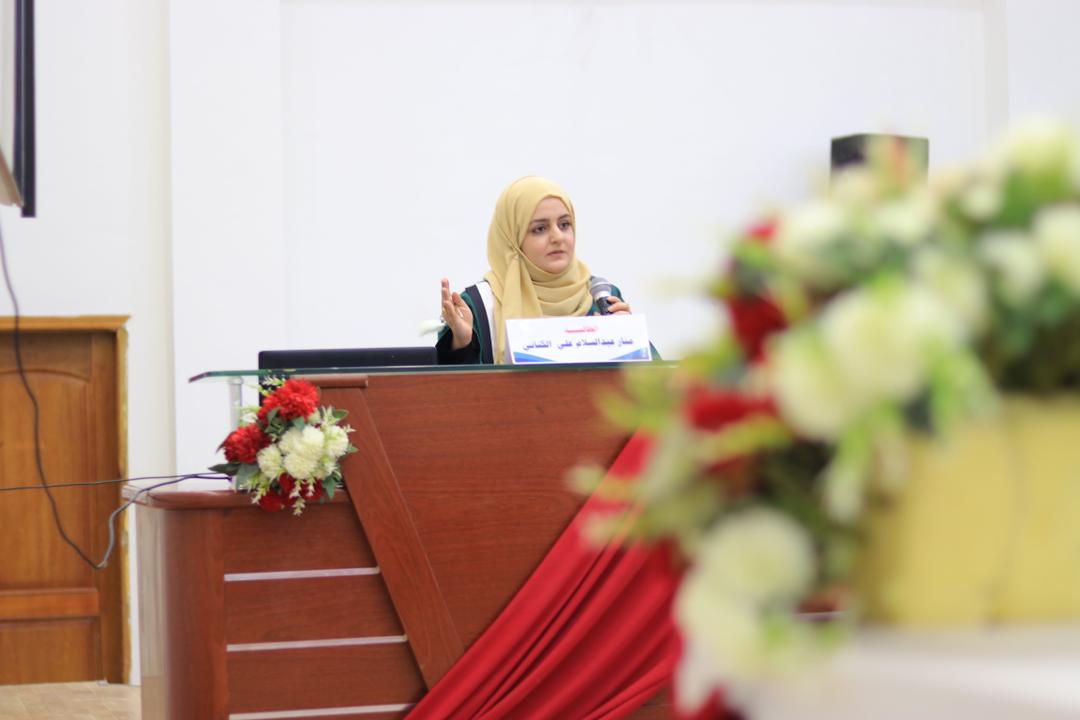the candidate researcher/ Manar Abdul-Salam Ali AL-KINANI obtained the Master degree in Restorative and Esthetic Dentistry with an Excellent average of 95%

Thursday, Rabii-Akher 21st, 1446H, October 24th, 2024, the candidate researcher/
Manar Abdul-Salam Ali AL-KINANI
obtained the Master degree in Restorative and Esthetic Dentistry with an Excellent average of 95%, from the Department of Restorative and Esthetic Dentistry, Faculty of Dentistry, Sanaa University, for his Master’s thesis entitled:
Root and Canal Morphology of Permanent Maxillary and Mandibular Canines in a Sample of Yemeni Population Using Cone Beam Computed Tomography
The discussing committee consisted of:
♦ Associate Professor Mohsen Ali Yahya AL-HAMZY, Principle Supervisor Committee Member,
♦ Professor Abdel-Wahab Ismail AL-KHAWLANY, Internal Examiner Head of Committee, and
♦ Associate Professor Mohammed Mohammed Lottf AL-KHAWLANY, External Examiner Committee Member,
This master’s thesis aims at understanding thoroughly the anatomy of the canal and the root shape by Yemeni population using Cone-beam computed tomography so that endodontists and dentists avoid missed root canals and procedural errors.
The study comes out with some results, of which all maxillary canines examined in this study had one root. On the other hand, only 4% have two roots in the mandibular canines. The average lengths of the maxillary and mandibular canines (25.1 mm, and 23.3 mm respectively), show significant differences between the male and female patients. The overall prevalence of second root canals in maxillary and mandibular canines is 1.5% and 16.5% respectively. Significant differences are observed between male and female patients only in mandibular canines. Most of the teeth have a Type I canal configuration in both maxillary and mandibular canines. Significant differences are observed between the male and female patients in mandibular arch only. The most common shape of pulp cavity in maxillary and mandibular canines is seen oval. (12%) of the maxillary canines and (1.5%) of the mandibular canines have apical delta. In most cases, the direction of root curvature in the maxillary canine is distally (66.5%), and the mandibular canine is straight (63%). Maxillary canines show higher bilateral symmetries of root and canal numbers and canal configuration types (100%, 99%, and 99%, resp.) than mandibular canines (98%, 97%, and 95%, respectively).
The researcher presents a number of recommendations at the end of this dissertation, of which: Dentists should exercise extra caution while performing endodontic treatments for Yemeni patients because of the variety of their morphology. Yet, it is possible that they have a second root or double root canal in the maxillary and mandibular canine. CBCT is an accurate technique for evaluating the morphology of root canals.
Attendees of the session were a number of academics, researchers, interested students of the major, as well as the researcher’s colleagues and some of family members.








